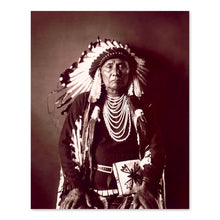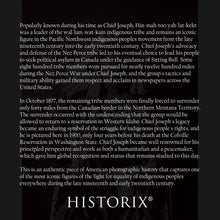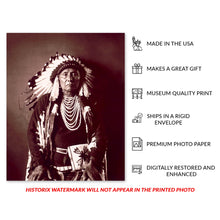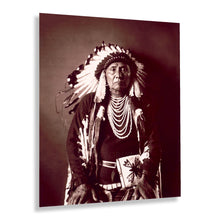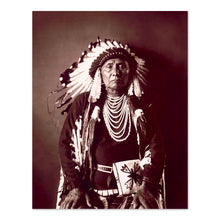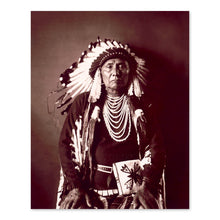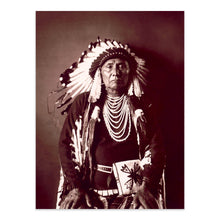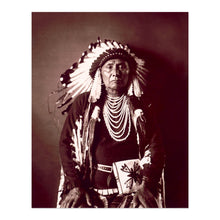
Feature Points
- HISTORIC PHOTO REPRODUCTION: You’ll love this high quality historic reproduction of 1900 Chief Joseph Photo Print. Our museum quality prints are archival grade, which means it will look great and last without fading for over 100 years. Our print to order photos are made in the USA and each print is inspected for quality. This historic photo is a perfect addition to your themed decor. Vintage photos look great in the home, study or office. They make a perfect gift as well.
- MUSEUM QUALITY: This high quality photo print will be a great addition to your vintage-themed wall. Don't waste money on cheap-looking, thin paper photos. We use high-end printing equipment with professional quality photo paper and ink. Our professional’s choice semi-gloss paper displays images beautifully.
- A LOOK BACK AT HISTORY: This is an impressive, historic reproduction of 1900 Young Joseph of Nez Perce Tribe Print Photo. A true piece of history. See our product description section for more fascinating information about this historic photo and its significance.
- READY TO FRAME: This unframed print includes a 0.2 inch border for a perfect frame fit and look. Our photos are designed to fit easy-to-find standard frame sizes, saving you money from having to pay for a custom frame. Each photo is inspected for quality and shipped in a rigid envelope/tube. The Historic Prints logo watermark will not appear in the printed photo.
- HISTORIX: We love history and art. Sometimes old photos have tears, separations and other blemishes. We digitally restore and enhance photos while keeping its historical character. All our photos are proudly made in the USA. Looking for a specific photo size? Please contact us. Customers all over the world love our vintage photos and we know you will too.
Additional Information
Popularly known during his time as Chief Joseph, Hin-mah-too-yah-lat-kekt was a leader of the wal-lam-wat-kain indigenous tribe and remains an iconic figure in the Pacific Northwest indigenous peoples movement from the late nineteenth century into the early twentieth century. Chief Joseph's advocacy and defense of the Nez Perce tribe led to his eventual choice to lead his people to seek political asylum in Canada under the guidance of Sitting Bull. Some eight hundred tribe members were pursued for nearly twelve hundred miles during the Nez Perce War under Chief Joseph, and the group's tactics and military ability gained them respect and acclaim in newspapers across the United States.
In October 1877, the remaining tribe members were finally forced to surrender only forty miles from the Canadian border in the Northern Montana Territory. The surrender occurred with the understanding that the group would be allowed to return to a reservation in Western Idaho. Chief Joseph's legacy became an enduring symbol of the struggle for indigenous people's rights, and he is pictured here in 1900, only four years before his death at the Colville Reservation in Washington State. Chief Joseph became well renowned for his principled perspective and work as both a humanitarian and a peacemaker, which gave him global recognition and status that remains studied to this day.
This is an authentic piece of American photographic history that captures one of the most iconic figures of the fight for equality of indigenous peoples everywhere during the late nineteenth and early twentieth century.










